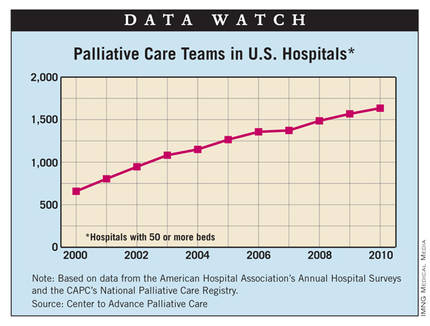
You can choose to become a nurse, an optometrist or a health services administrator from many medical career options. Some of these positions require extensive academic plans, but others provide growth opportunities and ample time to build a career. Learn more about the various medical careers. You never know when you might be inspired to follow one of these careers. These are the top medical careers.
Anesthesiologist
Find a good job description for anesthesiologists to help you start your career. Anesthesiologists have to be meticulous about their work and pay attention to every detail. This attention to detail is essential in maintaining patient safety, and minimizing personal exposure to errors during their shift. Anesthesiologists should be able speak clearly and write notes on charts. Effective communication helps anesthesiologists know what is happening with a patient and prevents misunderstandings.
Anesthesiologists work at hospitals and other medical facilities. They divide their time between patient rooms, operating rooms, and recovery areas. Because of the nature of this work, anesthesiologists may work irregular hours, and they may be required to be on call for extended periods of time. Anesthesiologists are allowed to work full-time, even though their hours may be irregular. This is normal considering the shortfall of anesthesiologists within the U.S.

Optician
A bachelor's degree is not necessary to be an optician. Opticians might consider a Bachelor of Arts, Interdisciplinary Studies (BAIDS). A BAIDS is a versatile undergraduate degree that prepares students for various career paths, including optometry. While an associate's degree will usually suffice to obtain an opticalist job, an apprenticeship is possible. Apprenticeships last two years and permit students to assist with customer service. The last step is to become an independent optician.
Opticians work a variety of hours depending on their location. However, most work full time 40 hours per week. Although opticians may work in shifts some retail stores require that employees work certain hours. Opticians are also employed in medical practices. They often work with ophthalmologists. One typical day would involve greeting customers, scheduling appointments, ordering frames and processing eye claims.
Nurse practitioner
As the name suggests, nurse practitioners are advanced practice registered nurses who provide health care to patients throughout their life. Two-thirds (or more) of nurse practitioners work in primary health care. However, they can also specialize in adult/geriatric medicine or family care. Nurse practitioners are licensed to prescribe drugs and other controlled substances. They can work in both hospitals and private practice. In 26 states, nurse practitioners may practice independently.
Nurse practitioners are also in high demand in the field health technology. These companies provide tech-enabled solutions and services. Because these companies are not run by people who have medical training, many of them hire nurse practitioners to be consultants. Nurse practitioners provide valuable insight into health policy and common diseases. They can also conduct research and be product managers for tech companies. They are entrepreneurs if they combine their love for innovation with their medical training.

Administrator of the health services
There are numerous healthcare administration jobs available. One of the most common are in hospitals, where 33% of health services administrators work. Other work settings include physician offices or ambulatory care centers. Healthcare administrators work alongside physicians, medical record personnel, coding, billing professionals, insurance companies, social workers, and other healthcare professionals. These administrators are responsible for maintaining patient care records and ensuring security in diagnostic facilities. They also have responsibility for pharmaceutical services. Managers of complex medical systems need to also know how to help patients.
The health services administrator is responsible for overseeing the day to day operations of a health-care organization. Supervising staff, creating training programs and working with the governing boards to implement policies are all part of this job. Managers of the health service also manage budgets, maintain equipment, and host staff meetings. It all depends on how much responsibility they have. An individual could earn as much as $104,280 a year.
FAQ
What is "health promotion"?
Health promotion refers to helping people stay healthy and live longer. This promotes health rather than treating existing diseases.
It includes activities such as:
-
Right eating
-
getting enough sleep
-
exercising regularly
-
Staying fit and active
-
It is important to not smoke
-
managing stress
-
Keeping up with vaccinations
-
Alcohol abuse prevention
-
Regular screenings, checkups, and exams
-
Learn how to deal with chronic illnesses.
How can I ensure that my family has access health care of the highest quality?
Most states will have a department for health, which helps to ensure that everyone has affordable access to health care. Some states have programs that provide coverage for low-income families who have children. Contact your state's Department of Health to learn more about these programs.
What are the three levels of health care facilities?
General practice clinics are the first level. They provide basic medical services to patients who don't require hospital admission. If necessary, they may refer patients to other providers. This can include nurse practitioners, general practitioners, and midwives.
The second level are primary care centres, which provide complete outpatient care, as well as emergency treatment. These include hospitals, walk in clinics, urgent care centres, family planning clinics and sexual health clinics.
The third level includes secondary care centers that offer specialist services like eye surgery, orthopedic surgery and neurosurgery.
What is a system of health in public health and what does it mean?
Health System refers to all the activities involved in providing medical services for a population. It includes all aspects of service delivery, finance, regulation and education.
What is the significance of the health-care system?
The health care system is an important part of any country's economy. It helps people live longer and better lives. It creates jobs for nurses, doctors, and other medical professionals.
No matter what income level, health care systems ensure that everyone has access to quality healthcare services.
If you are looking into pursuing a career as a doctor, nurse, or another medical professional, then understanding how healthcare systems function is essential.
What are you opinion on the most pressing issues in public health?
Many people are suffering from diabetes, obesity, heart disease, cancer, and heart disease. These conditions result in more deaths per year than AIDS combined with car crashes and murders. In addition, poor diet, lack of exercise, and smoking contribute to high blood pressure, stroke, asthma, arthritis, and other problems.
What is a medical system?
Medical systems have been designed to improve the quality of life and make it easier for patients to live longer and better lives. They make sure patients receive the best care when they need it.
They ensure the best possible treatment at the right time. They also provide information that doctors need to be able to offer the best advice possible on the most appropriate treatment for each patient.
Statistics
- Price Increases, Aging Push Sector To 20 Percent Of Economy". (en.wikipedia.org)
- About 14 percent of Americans have chronic kidney disease. (rasmussen.edu)
- The health share of the Gross domestic product (GDP) is expected to continue its upward trend, reaching 19.9 percent of GDP by 2025. (en.wikipedia.org)
- Healthcare Occupations PRINTER-FRIENDLY Employment in healthcare occupations is projected to grow 16 percent from 2020 to 2030, much faster than the average for all occupations, adding about 2.6 million new jobs. (bls.gov)
- For instance, Chinese hospital charges tend toward 50% for drugs, another major percentage for equipment, and a small percentage for healthcare professional fees. (en.wikipedia.org)
External Links
How To
What are the Four Health Systems?
The healthcare system includes hospitals, clinics. Insurance providers. Government agencies. Public health officials.
The overall goal of this project was to create an infographic for people who want to understand what makes up the US health care system.
These are some of the most important points.
-
Healthcare spending is $2 trillion annually, representing 17% of the GDP. This is nearly twice the amount of the entire defense spending budget.
-
Medical inflation was 6.6% in 2015, higher than any other category of consumer.
-
On average, Americans spend 9% of their income on health costs.
-
As of 2014, there were over 300 million uninsured Americans.
-
Although the Affordable Care act (ACA) was signed into law, its implementation is still not complete. There are still many gaps in coverage.
-
A majority of Americans believe the ACA should be maintained.
-
The US spends a lot more money on healthcare than any other countries in the world.
-
Affordable healthcare would mean that every American has access to it. The annual cost would be $2.8 trillion.
-
Medicare, Medicaid, private insurers and other insurance policies cover 56%.
-
The top three reasons people aren't getting insured include not being financially able ($25 billion), having too much time to look for insurance ($16.4 trillion), and not knowing what it is ($14.7 billion).
-
HMO (health management organization) and PPO(preferred provider organisation) are the two types of plans.
-
Private insurance covers all services, including doctor, dentist, prescriptions, physical therapy, and many others.
-
Public programs provide hospitalization, inpatient surgery, nursing home care, long-term health care, and preventive services.
-
Medicare is a federal program that provides health coverage to senior citizens. It covers hospital stays, skilled nursing facilities stays, and home care visits.
-
Medicaid is a program of the federal and state governments that offers financial assistance to low-income people and families who earn too much to be eligible for other benefits.